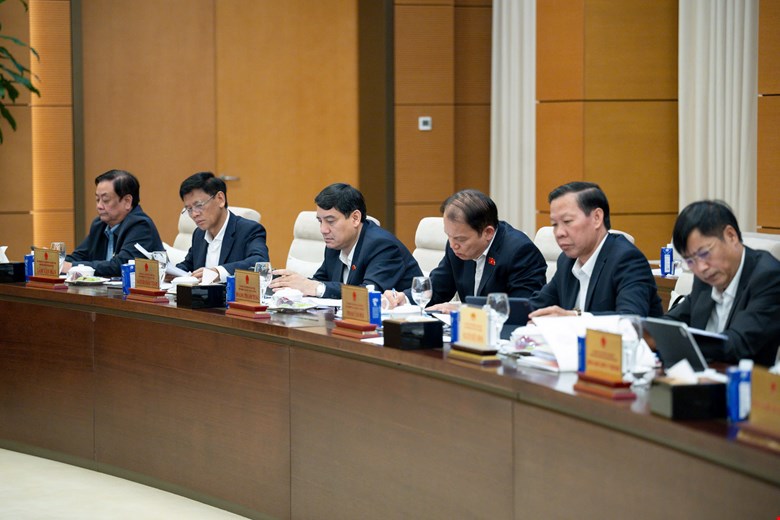The Government stipulates specific human resource mechanisms and policies in the education sector
On the afternoon of November 5, at the 51st Session, the National Assembly Standing Committee gave its opinion on the draft Resolution of the National Assembly stipulating specific mechanisms on a number of policies and guidelines in Resolution No. 71-NQ/TW dated August 22, 2025 of the Politburo on breakthroughs in education and training development.
The draft Resolution consists of 11 Articles, of which Article 1 stipulates the scope of regulation and subjects of application; Article 2 stipulates the principles of applying a number of specific and outstanding mechanisms and policies in the field of education and training; Articles 3 to 8 stipulate 05 groups of basic policies; Article 9 stipulates the organization of implementation; Article 10 stipulates transitional provisions; Article 11 stipulates implementation provisions.

All mechanisms and policies in the Resolution originate from and aim to successfully implement the viewpoints, goals and tasks identified in Resolution No. 71-NQ/TW of the Politburo.

The Resolution stipulates a number of specific and outstanding mechanisms and policies to implement breakthroughs in education and training development, allowing different application from current law within the scope, subjects and determination period; at the same time, stipulating a mechanism for supervision, evaluation and summary to serve as a basis for future legalization.
The Ministry of Education and Training proposed a Resolution to focus on adjusting 6 key groups of policies, with high direct impact and feasibility, including: Human resource management and development in the education sector; programs, contents and mechanisms for educational development; digital transformation, science and technology and innovation; international integration; finance, incentives and investment.
The draft Resolution also raises issues not regulated by law such as: Mechanism for digital transformation, science, technology and innovation in education; mechanism for international cooperation and integration in education; preferential and superior policies on land, taxes and resources for education; adding Clause 5, Article 7 on free textbooks for students of general education institutions (to be completed by 2030) and exemption of tuition and textbooks for National Defense and Security Education at higher education institutions and vocational education.
At the same time, the Government is assigned to prescribe a roadmap, ensuring compliance with the ability to balance the state budget, related laws and requirements to ensure fairness in access to education.
In addition, the draft also stipulates the contents of practical problems and inadequacies; issues that have been regulated but are not suitable; practical problems and inadequacies; reduction of administrative procedures; decentralization, delegation of authority, etc.
It is necessary to ensure the feasibility of increasing occupational allowances
In the group of programs, contents and policies for educational development, the draft Resolution stipulates: Vocational incentives are regulated at least 70% for teachers, 30% for employees and 100% for teachers working in areas with particularly difficult socio-economic conditions, border areas, islands, ethnic minority areas, mountainous areas and specialized schools.
Regarding the rate of preferential allowances for teachers and school staff, the review report, Chairman of the National Assembly's Committee on Culture and Society Nguyen Dac Vinh proposed to study specific regulations on mechanisms and implementation roadmaps, ensuring feasibility; consider transferring this content to Article 3 for suitability and unity in the management and development of human resources in the education sector.
In addition, the number of teachers and staff in public educational institutions is very large, so it is necessary to evaluate resources to ensure feasibility in implementation.
There are opinions suggesting adding the pilot content of implementing bilingual training programs in educational institutions to ensure the roadmap for implementing the goal of making English the second language used in schools in the spirit of Resolution 71.
There are opinions suggesting studying a mechanism to support the entire cost of studying for students of ethnic minorities to create breakthroughs, reduce the gap in the quality of education and training between regions and areas, and develop human resources for ethnic minorities.











